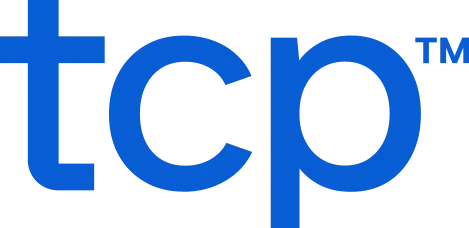It’s 7:15 a.m. at a busy clinic, and two medical assistants have already called out—one sick, one stuck with childcare issues. Patients are filling the waiting room, phones are ringing off the hook, and providers are asking for support while the front desk team scrambles to keep up. The practice administrator is left juggling texts, schedules, and staffing portals, trying to keep the day from unraveling before it’s even begun.
If you run a busy medical or dental office, mornings like this aren’t unusual. They’re the everyday balancing act that pulls at your staff, your time, and your budget.
Healthcare staff scheduling is where patient care, compliance, and costs collide. In healthcare offices, the pressure feels sharper because teams are smaller and practice managers wear multiple hats. There’s no central staffing department to bail you out — just you, your staff, and the patients you’re seeing that day.
This guide highlights nine of the most common healthcare scheduling challenges in 2026. Each section breaks down what these struggles look like in small practices, mid-sized groups, and large multi-office organizations.
Let’s start with the issue that quietly drives turnover, overtime, and patient frustration: coverage and staff endurance.
1) Balancing coverage while avoiding burnout
In small offices, even one absence throws the whole schedule off.
A front desk assistant out sick means a medical assistant might be pulled to answer phones between patient rooms. A hygienist on vacation can back up appointments for weeks. Managers fill the gaps by leaning on the same reliable people, but that quick fix creates long-term problems.
Burnout in offices can look like too many hours, it’s about or being stretched across too many roles.
An assistant might room patients, do arrival check-ins, and chase down insurance details all in one afternoon. Over time, the stress adds up. Fatigue shows up as errors, short tempers with patients, and eventually, resignations.
When schedules are created in spreadsheets or tacked to a breakroom wall, it’s hard to spot who carries the heaviest load. That’s why turnover often feels sudden — staff reach a breaking point before anyone notices the imbalance.
How staffing mix impacts healthcare staff scheduling by organization size
SMB: One person often handles scheduling, payroll approvals, and callouts. With so little backup, any absence piles stress on the rest of the team.
Mid-market: Growing practices may have scheduling policies, but without live visibility, managers don’t see who is consistently covering gaps.
Enterprise: Larger physician groups and multi-site practices rely on float pools to spread the load. While this helps, layers of approval can slow down adjustments, leaving teams waiting while stress and urgency build.
2) Credential-based assignments and scope-of-practice rules
Every patient who walks in the door deserves to see the right qualified staff. Yet in many offices, the staff schedule doesn’t always match credentials to shifts.
For example, physicians get too many on-call shifts because less experienced nurses or assistants get a night shift, instead of fully credentialed staff. Not only is it an inconvenience, but the mismatch risks patient safety, frustrates staff, and costs the practice extra in overtime pay. Scope-of-practice also varies by state and payer, which means a nurse practitioner credentialed for one location may not be eligible to float to another. If your healthcare staff schedule treats credentials as interchangeable, you create last-minute holes and denial risk. Credentialing means ensuring CME leave, certifications, and licenses are tracked in real time and tied to the schedule. If those data points live in a separate HR file or on sticky notes, managers are left guessing.
How credential tracking impacts healthcare staff scheduling by organization size
SMB: Small offices often track credentials in spreadsheets or a binder. If the practice manager is out, renewals get missed and patients are rescheduled last minute.
Mid-market: Growing practices may store credentials in an HR system, but the scheduler doesn’t see the data when assigning shifts. This leaves gaps where underqualified staff are placed on critical shifts.
Enterprise: Larger organizations usually have compliance teams, but with multiple states and payers, rules vary widely. A system lag or misfiled credential can still slip through and trigger denials or reschedules.
3) Keeping shift assignments fair and transparent
Who gets the “good” shifts is just one part of fairness.
Respecting staff preferences and not overloading them with on-call duty are just as important. In too many practices, staff get frustrated because the schedule ignores the days they request off or they get placed on shifts they specifically didn’t want.
Imagine an assistant who needs just two Saturdays each month to watch their kids but still shows up on every weekend schedule. or a physician covering consecutive on-call weekends with no break.
These patterns wear people down. Over time, staff disengage, turnover spikes, and filling open roles becomes harder.
Transparency is the difference between trust and resentment. Staff need to see that work hours, on-call shift rotations, and time-off requests are distributed fairly, even if the schedule isn’t perfect.
How shift assignments impact healthcare staff scheduling by organization size
SMB: A single person responsible for the schedule often creates it by hand. Bias, even unintentional, creeps in when certain staff are favored. Transparency is limited because the schedule may only be posted on paper or emailed.
Mid-market: Policies exist, but staff often can’t see how or why they were scheduled. Without visibility they assume favoritism, which undermines morale even if the assignments are technically fair.
Enterprise: Large groups follow formal rules or CBAs, but the complexity makes it hard for staff to understand why they’re scheduled the way they are. Staff may struggle to understand the system, which makes communication from leadership essential.
4) Handling last-minute callouts without schedule chaos
Few things rattle a clinic faster than a last-minute callout.
When someone calls out two hours before their shift, the scramble begins. Phones buzz, texts fly, and the practice manager tries to plug a hole without leaving patients waiting. The risk is both in the delay and the lack of process that continues to create the problem.
Small practices lean on whoever can come in fastest, often the same people who already cover most gaps. Mid-market and enterprise groups may use shift boards, but without safeguards, unqualified staff can pick up open shifts. So practice managers have to clean up mistakes after the fact, raising compliance risks if the wrong person treats patients.
How call-out coverage impacts healthcare staff scheduling by organization size
SMB: Coverage depends on personal phone calls or group texts. If no one responds or the practice manager isn’t available, shifts go uncovered.
Mid-market: Some practices use shared boards or chats, but they aren’t tied to credential checks. Unqualified staff can volunteer, leaving managers to reassign at the last minute.
Enterprise: Central scheduling teams handle callouts more consistently, but delays in communication between offices and central teams often slow down fixes or cause mismatches.
5) Coordinating multi-location schedules and float pools
Offices with more than one location face an added layer of complexity: balancing staff across sites.
A hygienist may be scheduled in two different offices on the same day, while an assistant might be double-booked for front desk coverage at one location and clinical support at another.
The biggest risk is mismatched staffing — too many people at the wrong place, which leads to wasted labor spend, overtime at the busier site, and frustrated staff who travel without clarity about their assignments.
How multi-location healthcare staff scheduling is impacted by organization size
SMB: Travel time and coverage aren’t always factored into the schedule. Staff may be told to float without clear expectations, which builds frustration.
Mid-market: Staff often rotate between offices, but with no live system, managers don’t see double bookings until patients are waiting.
Enterprise: Central scheduling can balance coverage across sites, but bureaucracy slows down fast swaps when patient volumes shift unexpectedly.
6) Navigating complex labor laws
Labor laws are a moving target in healthcare. Add new evening hours at urgent care, and suddenly you’re dealing with state break rules and on-call pay requirements. Miss one detail, and you face fines, grievances, or back pay claims.
The complexity grows as practices expand across states or negotiate CBAs. A rule that applies in one state may not exist in another. If managers aren’t trained or the schedule doesn’t enforce labor law compliance, you may become noncompliant without realizing it.
How compliance complexity impacts healthcare staff scheduling by organization size
SMB: Compliance usually depends on the practice manager’s knowledge. With limited HR support, minor oversights can create significant risks.
Mid-market: Policies are known but not consistently enforced in scheduling, which leads to compliance gaps across locations.
Enterprise: Compliance teams exist, but multi-state rules and payer variations make alignment difficult. Even large systems face slip-ups, and one small issue is magnified by the scale.
7) Overtime control and labor-cost drift
Overtime adds up in ways that sneak past even the most careful of managers.
A few assistants stay late to catch up on charting, or a hygienist adds an extra patient at the end of the day. It doesn’t feel like much until payroll shows a budget overrun. While it’s rarely intentional, it frequently happens.
For practices already running lean, even small overages hit margins hard. The problem is visibility — many practices don’t see overtime creep until after payroll closes. By then, it’s too late to adjust.
How overtime control impacts healthcare staff scheduling by organization size
SMB: Overtime isn’t tracked in real time, so the practice manager doesn’t catch issues until payroll runs.
Mid-market: Reporting exists but isn’t detailed enough to show trends. Managers see overages after the fact, not while they can still make changes.
Enterprise: Finance teams monitor overtime, but rules vary by department. Some treat overtime as unavoidable, while others clamp down too tightly, frustrating staff.
8) Schedule access and communication
A schedule only works if everyone can see it, update it, and rely on it.
Too often, staff are left out of the loop. A change gets emailed, but an assistant doesn’t check their inbox. A shift is swapped, but the front desk never hears, leaving patients waiting for someone who isn’t coming.
Communication gaps like these create no-shows, frustrate staff, and make patients question your credibility and reliability. Without mobile access, instant alerts for changes, shift reminders, or clear visibility into shift tasks, you’re playing in a 2026 workplace with 2006 technology.
How schedule access impacts healthcare staff scheduling by organization size
SMB: Paper schedules or basic spreadsheets are common. Updates are easy to miss, and communication depends on phone calls, memory or hallway conversations.
Mid-market: Multiple tools may be used, but they aren’t connected. Staff availability sits in one place, credentials in another, and schedules in a third. Managers become human routers of information.
Enterprise: Systems exist, especially for healthcare practices with all-in-one systems, but their unnecessary complexity slows down updates. A change may be logged centrally, but it takes hours to reach the front desk.
9) Aligning staffing with unpredictable patient volumes
Patient demand in offices doesn’t follow a script.
Flu season can overwhelm a family practice, while the next week leaves rooms half empty. A dental office may see a surge in hygiene appointments during school breaks, then long stretches of open slots.
Without labor forecasting, schedules swing between understaffing and wasted labor. Patients notice when they wait too long, and budgets suffer when staff are sent home early. Even skipping the most basic forecasting — like looking at last year’s appointment data, seasonal trends, or local health alerts — puts you in the dark when trying to balance coverage.
How staff forecasting impacts healthcare staff scheduling by organization size
SMB: Forecasting is rarely used and mostly guesswork. Staffing is reactive, based on what happened last week.
Mid-market: Some data exists, but it’s not tied to scheduling. Managers can see patterns but can’t adjust in real time.
Enterprise: Larger groups have forecasting tools, but adoption varies. Some offices use them effectively, while others ignore the data.
How to start untangling your healthcare staff scheduling challenges
Every practice faces some mix of these challenges. The goal isn’t to rip out your whole system, but to gain visibility, reduce manual work, and build processes that prevent problems instead of just reacting.
The hardest part isn’t always the schedule itself, but change management.
Getting people to adopt new solutions and policies is no easy feat. A practice may launch a new scheduling platform, but if managers still keep spreadsheets on the side, the benefits are null. Not committing to change undercuts consistency, creates inefficiencies, and reduces the return on investment.
Adoption hurdles by organization size
SMB: Adoption often depends on one or two people. If they resist, nothing changes.
Mid-market: Training is limited, so use of new systems varies across locations. That inconsistency creates confusion.
Enterprise: Large organizations have formal change programs, but complexity slows rollouts. Adoption lags as staff cling to old habits.
Your best path forward for better scheduling is about small, steady wins.
Pilot new processes with a single team, gather feedback, and expand gradually. Provide clear training, highlight benefits for staff, and celebrate early successes. Adoption sticks when the part of the job people they don’t care about gets easier, not harder.
Quick-start roadmap
Want to take immediate action? Here’s a simple starting point for untangling scheduling challenges:
- Map all compliance rules, credential gates, and role restrictions in one place
- Establish a single live schedule accessible to staff and managers
- Pilot escalation steps for last-minute call-outs
- Turn on alerts for overtime, rest breaks, and credential expirations
- Review misses weekly and make micro-adjustments
Reimagine healthcare staff scheduling for your practice
Scheduling doesn’t have to be a daily scramble. Visibility, fairness, and clear communication can become strengths that support both staff and patient care.
Take a step back and ask yourself: Are you meeting coverage needs without exhausting your staff? Are compliance risks truly under control? Do you trust that every shift has the right people in the right roles at the right time?
If the answer is “not always,” it’s time to rethink your scheduling approach.
Modern, office-focused solutions can simplify compliance, reduce last-minute chaos, and give you confidence in your coverage. When scheduling works, your staff can focus on patients — and your office can run the way it should.
TCP Software’s employee scheduling and time and attendance solutions have the flexibility and scalability to suit your business and your employees, now and as you grow.
From TimeClock Plus, which automates even the most complex payroll calculations and leave management requests, to Humanity Schedule for dynamic employee scheduling that saves you time and money, we have everything you need to meet your organization’s needs, no matter how unique. Plus, with Aladtec, we offer 24/7 public safety scheduling solutions for your hometown heroes.
Ready to learn how TCP Software takes the pain out of employee scheduling and time tracking? Speak with an expert today.


